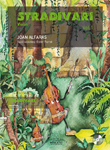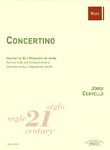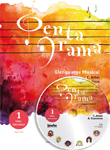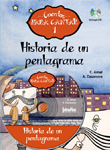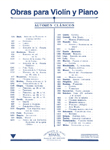WORKS
- Genre
-
Musical education
- Choir
- Counterpoint
- Dictation
- Direction
- Exam study manuals
- General music pedagogy
- Harmony
- Hearing
- Illustrations / Posters
- Improvisation / Sight reading
- Instrument methods
- Instrument pedagogy
- Instrumental study repertoire
- Instrumentation and orquestration
- Musical language
- Solfège
- Templates
- Theory and analysis
-
Incidental music
-
Lined paper
-
Flamenco
-
Religious music
-
Classical / contemporary
-
Modern music
-
Folk music / traditional
-
Musicology
-
Divulgation
-
Games and hobbies
-
Music therapy
-
Children / Youth
-
- Instruments
- Ensemble
- Difficulty level
- Period
- Genre
SOPORTE
Search
Find here: books, scores, composers, digital pieces, cd's
Best-selling works
Our classics
Newsletter
I wish to be informed of the news about your music
We have received your e-mail correctly
Multimedia
Pentagrama Escolar 3 (castellano)
Guía didáctica (castellano)
Lenguaje musical
AMAT CUNNINGTON, Carmen; CASANOVA, AnnaAMAT CUNNINGTON, Carmen; CASANOVA, AnnaAMAT CUNNINGTON, Carmen; CASANOVA, AnnaReg.: B.3478A
15,00 €
P.V.P. (VAT included 4%)
Add to cart
- Genres: Musical education: Hearing; Musical language; Solfège; Theory and analysis; Choir; General music pedagogy.
- Language: Español / Castellano
- Product format: Libro
- Difficulty level: Elementary
- Period: 2nd half S. XX - XXI
- Publishing house: Editorial Boileau
- Collection: Pentagrama
- Illustrator: FORNÉ, Ester; ORIVE, Eva
- No. of pages: 92
- Measure: 31,00 x 23,00 cm
- ISBN: 978-84-8020-809-3
- ISMN: 979-0-3503-0470-5
- Available in digital: No
Guide in Spanish, Catalan version: B.3477A.
This guide contains a series of didactic resources for all the sections of each unit. It also includes a detailed explanation of each unit, as well as an extension of the didactic material, a control of each unit and a quarterly evaluation, the biographies of the authors mentioned in the book, the solver of the exercises of the student's notebook and the controls and quarterly evaluations, original songs with chords (for instrumental accompaniments), an example of orchestral work and, finally, the proposal of a quarterly report.
All this material is designed so that students acquire the knowledge corresponding to this course and in turn enjoy the music, whether playing, listening, singing, dancing ... that is, living and actively participating in the musical event.
To guide the student towards music, which is the fundamental objective of the teaching of musical language, a method is necessary. However, this is just an auxiliary pedagogical element that can not replace the teacher's task, which is the one who can best transmit enthusiasm and enthusiasm for learning and musical experience.
The authors
(Carme Amat and Anna Casanova)

